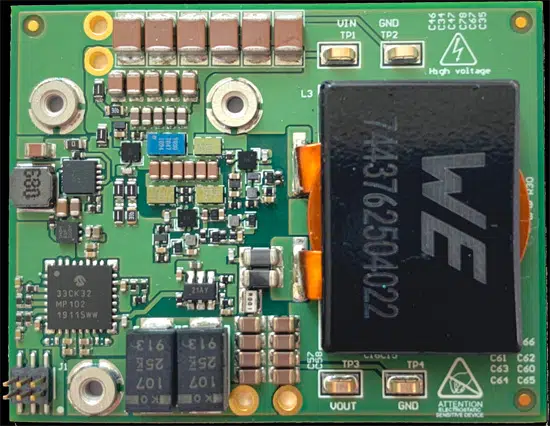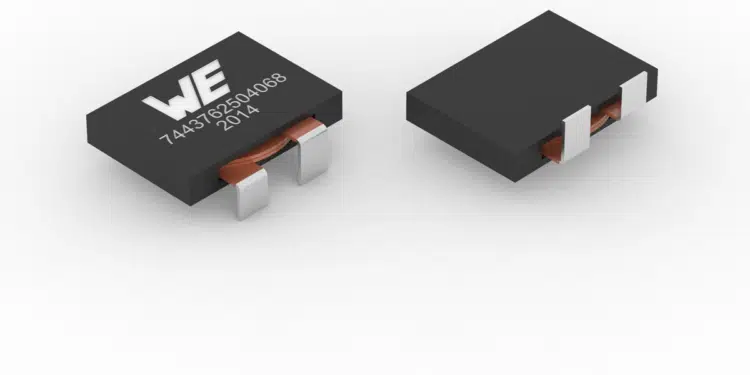With WE-HCFT 2504, Würth Elektronik has added a model with an unusually low overall height to its tried and tested family of THT high-current inductors.
The flat wire coil with MnZn core is only 4 mm high. With no standard competitors in the market. Current-carrying capability extends to 33 A. Achieving one of the highest power density and efficiency within HCFT family. The inductor also features very low DC and AC losses through its optimized wire and core design. In addition WE-HCFT 2504 exhibits excellent temperature performance over the entire operating temperature range of -40C to +125 °C.
WE-HCFT 2504 is available in inductance values of 1 µH, 2.2 µH, 4.7 µH, 6.8 µH and 10 µH. The device is suitable for use in POL regulators for FPGA/ASIC/GPU, high-efficiency DC/DC converters, high-current switching power supplies, forward converters, half-bridge and full-bridge converters, as well as battery chargers and solar inverters. The product complies with the AEC-Q200 standard.

WE-HCFT 2504 is available immediately from stock with no minimum order quantity. Upon request, Würth Elektronik will provide free samples to developers.
































